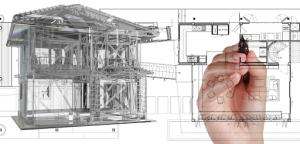Can These Tiny Micro Houses Relieve Denver’s Cutthroat Rental Market?

 The Denver housing market is one of the hottest in the nation. And while homebuyers might end up paying more than they anticipated, sellers are capitalizing on high demand and rising prices. But for renters in Metro Denver, it’s a different story entirely.
The Denver housing market is one of the hottest in the nation. And while homebuyers might end up paying more than they anticipated, sellers are capitalizing on high demand and rising prices. But for renters in Metro Denver, it’s a different story entirely.
On average, 4,000 people move to Denver every month, and with high demand for both apartments and housing, Denver natives and transplants alike are struggling to find a place to live. Times are particularly tough for the elderly. With 20-somethings dominating the Denver rental market right now, many renters over 60 say they may be forced to move away from Colorado altogether. A number of luxury apartment units have gone on the market recently, but for those seeking rooms to rent, finding anything for less than $1,200 a month can feel impossible.
But where some people see a rental crisis, University of Texas at Austin professor Jeff Wilson sees an opportunity. Wilson has developed micro-houses he calls Kasita cubes. Wilson has previously created designs for so-called “tiny houses,” but now he wants to bring “tiny apartments” to the market, too.
Wilson is so committed to sustainable development and green housing that he lived in a 33-square- foot dumpster for 10 months for inspiration.
There is a growing market for green housing in the U.S. About 28% of men and 25% of women prefer “sustainable products” when designing or decorating their homes, a sizable niche for innovators like Wilson to target.
He describes his invention as high-tech living cubes. What sets Kasita apart from other tiny houses is its modular design; the living cubes are designed to be transportable, so they can be slid in and out of steel-framed “racks” in large urban centers. Wilson also designed the cubes with integrated smart systems, which he says could be powered by solar panels and Tesla’s new home battery.
“It enables us to go into very small spaces,” says Wilson. “The entire footprint of that rack is only about 1,000 square feet or so. So it allows us to move into unused, previously unusable pieces of land.”
For reference, each Kasita cube is about 30% larger than a shipping container. Of course, most Denver renters are more concerned about finding affordable housing than green housing. But despite the high-tech features, Wilson insists the living cubes will be affordable.
“We are very confident that these will rent for about half of market for a studio,” says Wilson. “So in Austin, that is about $600.”
And after the first cubes are installed in Austin next year, Wilson wants to bring his invention to Denver next. At this point, Denver renters will probably go for anything that relieves that city’s cutthroat housing market.






